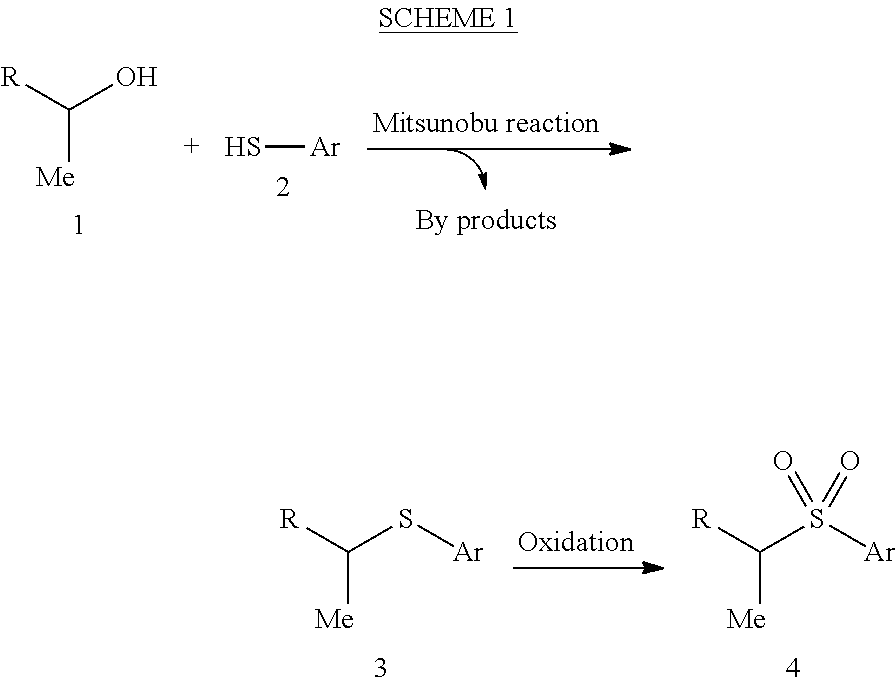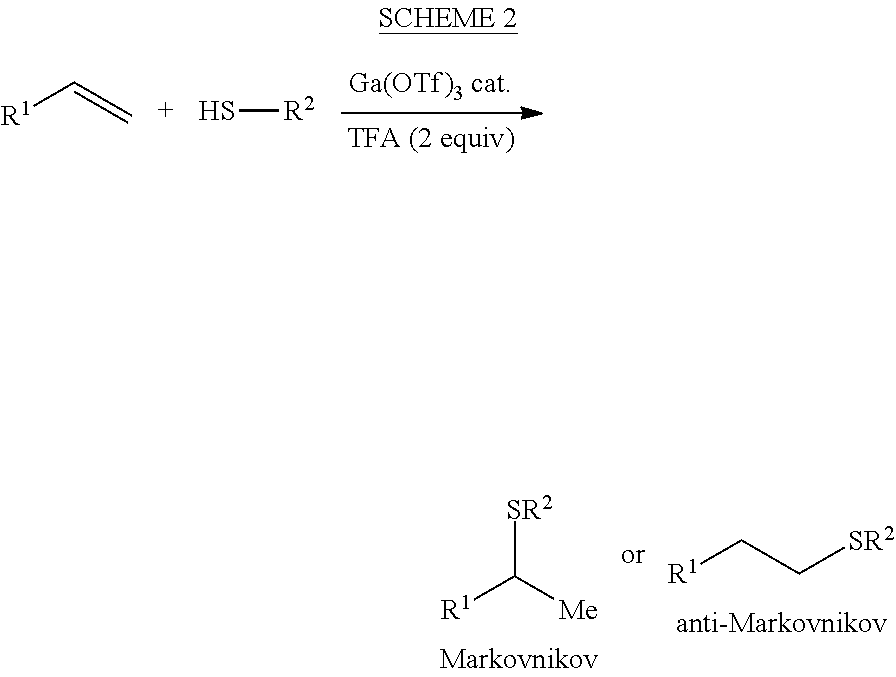Hydrothiolation of Unactivated Alkenes
a technology of unactivated alkenes and thiols, which is applied in the direction of group 5/15 element organic compounds, physical/chemical process catalysts, mercapto/sulfide group formation/introduction, etc., can solve the problem that the acquisition of markovnikov addition products still represents a significant challeng
- Summary
- Abstract
- Description
- Claims
- Application Information
AI Technical Summary
Benefits of technology
Problems solved by technology
Method used
Image
Examples
example 1
Hydrothiolation Using Diisopropyl Phosphorothioic Acid
[0024]A reaction vessel equipped with a magnetic stir-bar was charged with dichloromethane, Ga(III) triflate (5 mol %), alkene (1 equiv), phosphorothioic acid (1.2 equiv), and the indicated amount of trifluoroacetic acid. The reaction was aged overnight at room temperature. The reaction was then quenched with saturated aqueous sodium bicarbonate, extracted three times with dichloromethane, washed with brine, dried over sodium sulfate and then concentrated under vacuum. The crude residue was purified using silica gel column chromatography to afford the desired hydrothiolated product.
example 2
Hydrothiolation Using Other Thiols (Including the Julia-Kocieński Thiol)
[0025]A reaction vessel equipped with a magnetic stir-bar was charged with dichloromethane, the indicated amount of Ga(III) triflate, thiol (2 equiv), and the indicated amount of trifluoroacetic acid. The mixture was then cooled to 0° C. and brought into a darkroom equipped with a red lamp where the alkene (1 equiv) was added. The reaction vessel was then sequestered from ambient light using aluminum foil, and aged overnight at the indicated temperature. The reaction was then quenched with saturated aqueous sodium bicarbonate, extracted three times with dichloromethane, washed with brine, dried over sodium sulfate, and then concentrated under vacuum. The crude residue was purified using silica gel column chromatography to afford the desired thioether.
PUM
| Property | Measurement | Unit |
|---|---|---|
| temperatures | aaaaa | aaaaa |
| temperatures | aaaaa | aaaaa |
| geometric purity | aaaaa | aaaaa |
Abstract
Description
Claims
Application Information
 Login to View More
Login to View More - R&D
- Intellectual Property
- Life Sciences
- Materials
- Tech Scout
- Unparalleled Data Quality
- Higher Quality Content
- 60% Fewer Hallucinations
Browse by: Latest US Patents, China's latest patents, Technical Efficacy Thesaurus, Application Domain, Technology Topic, Popular Technical Reports.
© 2025 PatSnap. All rights reserved.Legal|Privacy policy|Modern Slavery Act Transparency Statement|Sitemap|About US| Contact US: help@patsnap.com



